Which Is The Best Fertilizer For A Snake Plant?
If you absolutely have to use a fertilizer on a snake plant, always go for a balanced NPK 10-10-10, until and unless your soil needs otherwise.
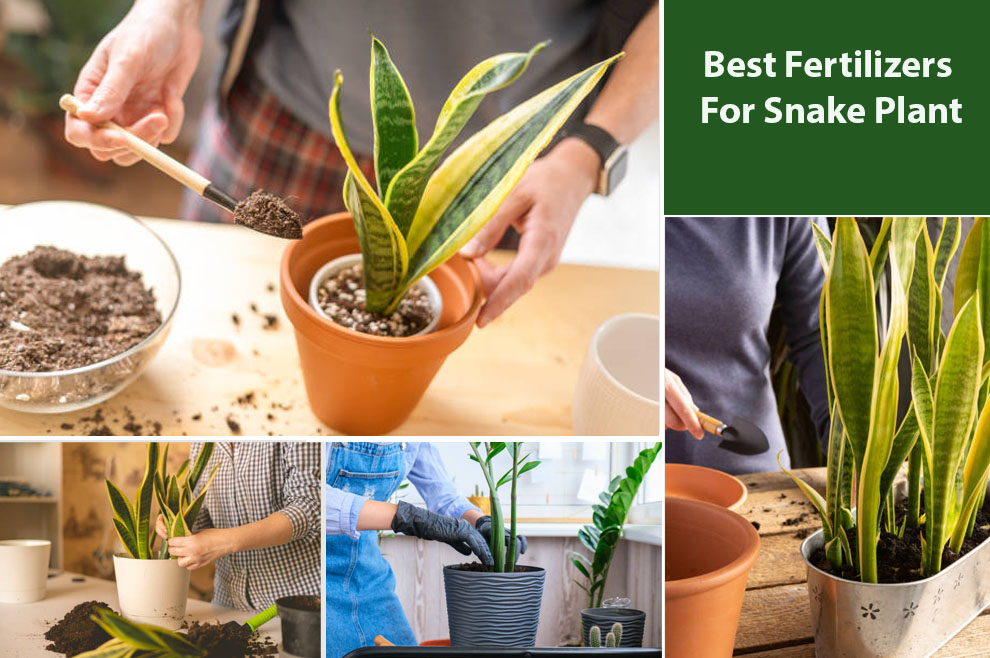
Snake plants are the most popular houseplants mainly because of their forgiving nature. Distinguished by their sculptural, spiky leaves, the snake plants are low-maintenance plants to grow indoors. They can adapt to new conditions and locations and thrive on minimal attention.
Given how easy they are to maintain – do snake plants ever need extra nourishment? While you may not have to add snake plant food regularly, they can be beneficial, sometimes even imperative, if the snake plant needs a little boost from an extended period of stress. You must also test your soil and if it lacks nutrients, you can use a houseplant fertilizer with NPK 10-10-10 on your snake plants for the best results.
Moreover, at times, the environmental conditions also become responsible for the plant’s poor health. Consequently, the plant needs a fertilizer that can help it thrive. However, if the plant starts showing damage signs, you might want to inspect further.
The Best Fertilizers For Snake Plants
- Perfect Plants Liquid Snake Plant Fertilizer – Specialized Pick for Snake Plants
- Espoma Organic Concentrated Indoor Plant Food – Multi Utility Option
- Miracle-Gro Indoor Plant Food – Best Liquid Fertilizer
- Miracle-Gro Indoor Plant Food Spikes – Most Easy to Use
- Professional Liquid Snake Plant Fertilizer – Premium Grade Plant Food
- Indoor Plant Food All-purpose House Plant Fertilizer – Best Slow-Release Pellets
What Kind of Plant Food Do Snake Plants Like?
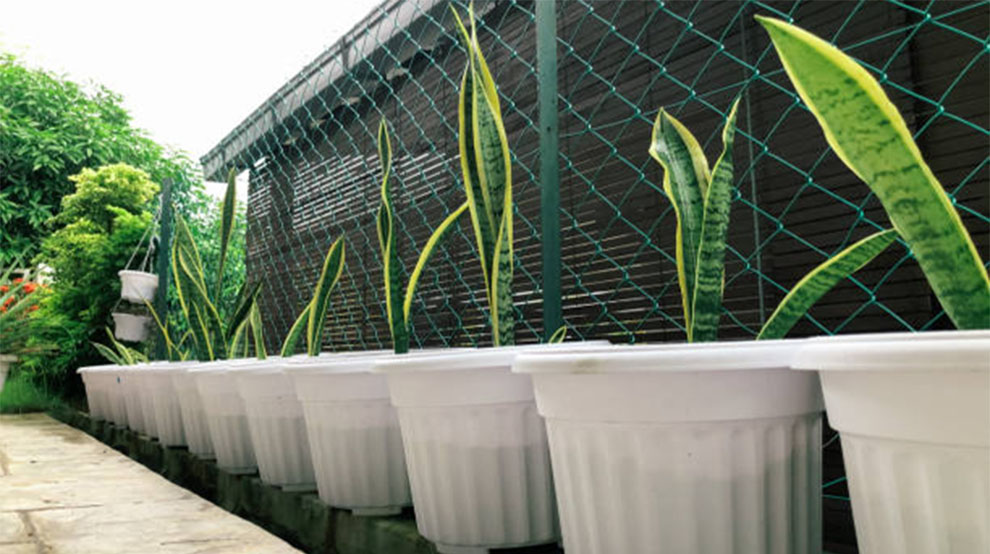
Snake plants feed best on a balanced fertilizer. However, if you do not quite understand what it means, let us explain it in light detail.
You must pick a fertilizer wherein the N-P-K ratio with numbers is the same. What is the N-P-K ratio? It is the sequence of numbers separated by hyphens, and you will find them written on all the fertilizer labels. From these digits, you can know the ratio of Nitrogen, Phosphorous, and Potassium in the fertilizer formula.
1. N – Nitrogen is the quintessential macronutrient for any plant species and helps with photosynthesis. Nitrogen is common in almost all fertilizers because it is one nutrient that plants typically consume most rapidly.
2. P – Phosphorous – Plants need it for fruit production, flowering, and root health. Adding phosphorous triggers blooming in succulents and cacti. Even though snake plants produce flowers, it is a rare sight.
3. K – Potassium – It supports the overall growth and the plant structure. In succulents and snake plants, potassium can help with water storage at the cellular level.
Depending on your soil deficiency, you can pick a fertilizer with varied ratios. However, if the soil is good and your plant is growing just fine, then go for a fertilizer with NPK 10:10:10 – a totally balanced one.
Best Snake Plant Food To Consider For Your Plant’s Lustrous Growth
There are so many benefits of a snake plant. Make sure you feed it right to enjoy them all for many-many years. Listed-below are some of the fertilizers loved by snake plants.
1. Perfect Plants Liquid Snake Plant Fertilizer
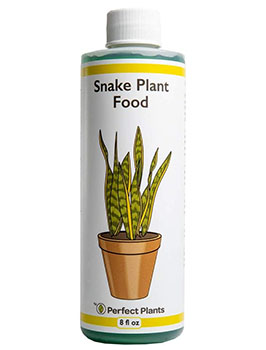 |
Check price on Amazon |
It is one of the most widely used fertilizers that help foster vibrant growth. The feed contains all the vital nutrients that your plant needs to grow big and strong. This liquid fertilizer will show its effectiveness for several months. You can even use this fertilizer for other succulents around your home.
How to use it?
This plant food for sansevieria is suitable for all snake plant indoor varieties. You only have to mix the solution in a small quantity to the water to meet its weekly needs. A teaspoon per gallon suffices to revitalize your snake plant.
2. Espoma Organic 8 Ounce Concentrated Indoor Plant Food
 |
Check price on Amazon |
It is an organic, liquid fertilizer that offers the plant organic nutrients to ensure good growth. It is safe for use around pets and kids. It can provide the plant with the necessary proteins and various beneficial microbes, helping the snake plant grow optimally.
You can use it on small and large houseplants, making it the best plant food for snake plants, monstera, fiddle leaf figs, palms, and pothos.
How to use it?
You need to add half the capacity of indoor plant food liquid for every quart of water and then feed the solution to plants biweekly to provide the plants with the necessary nutrients. You can use it every two to four weeks to achieve the best results.
3. Miracle-Gro Indoor Plant Food (Liquid)
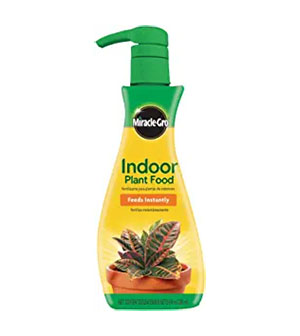 |
Check price on Amazon |
If you are seeking an affordable, tried and tested item, Miracle Gro is the best fertilizer for snake plants you could opt for. You can shop for it in singles, two-packs, or six-packs.
It is a balanced fertilizer, ideal for catering to all the nutritional needs of the plant sans any overfeeding risks. It is a good choice for beginners worried about applying too much fertilizer to the plant. The only low to this fertilizer is that it demands frequent feeding.
How to use it?
Even though you can apply the fertilizer directly into the soil, we recommend mixing it with water when feeding the snake plants. This added step goes a long way in protecting the plant’s roots from accidental burning.
So, you will have to mix at four pumps per quart of water and apply it as part of the plant’s typical watering schedule. You can use it as frequently as once per week.
4. Miracle-Gro Indoor Plant Food Spikes, Includes 24 Spikes
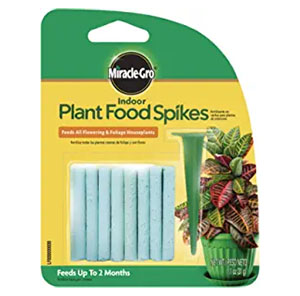 |
Check price on Amazon |
Most people decide on growing snake plants because they are low-maintenance. Amidst this, it might not be so much fun if you have to follow a fertilizer routine. So, if that’s the trouble you have been experiencing, consider opting for the Miracle-Gro fertilizer spikes.
Since it is a pre-measured spike, it is the best fertilizer for sansevieria to give the plant all the required nutrition. The spikes feed the plant continuously for up to two months. However, if not used as recommended, it makes them susceptible to fertilizer burn.
How to use it?
You must break the spikes in half and distribute them evenly to achieve the desired results. You must place the spikes in the soil as far from the base as possible. It helps keep the roots safe.
Take the fertilizer spike and press every spike into the soil till it gets covered completely. Ensure that you insert the spikes halfway between the container edge and the snake plant. Follow the dosage directions mentioned on the label for the best results.
5. Professional Liquid Snake Plant Fertilizer
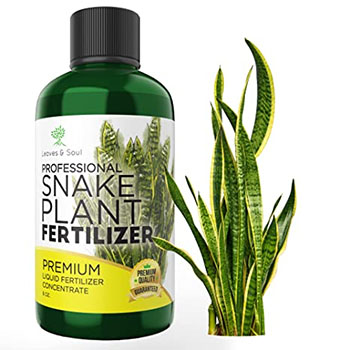 |
Check price on Amazon |
It is an excellent snake plant food and the ideal blend of nutrients to offer your snake plant all the nutrients needed to grow healthy. The fertilizer comes in the 3-1-2 liquid concentrate and has all the vital nutrients your plant seeks.
You can use it on all snake plant varieties, as it works well for mature snake plants and seedlings. Its premium blend allows maximum absorption for plant vitality and growth. You will find this fertilizer in sturdy, durable packaging, in an eight oz foil-sealed bottle, and store it in a dry, safe place.
How to use it?
You need to blend it with water to provide a single application and use it every other watering cycle. We recommend using only between one and two teaspoons for every eight cups of water.
6. Indoor Plant Food (Slow-Release Pellets) All-purpose House Plant Fertilizer
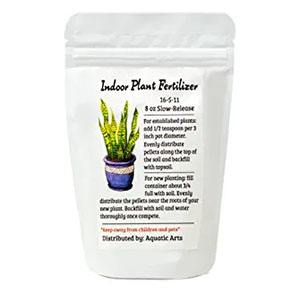 |
Check price on Amazon |
It is a slow-release snake plant food that promotes healthy growth and prevents wilt. The fertilizer has a 16-5-11 ratio, but it can help bring snake plant back to life. This Aquatic Arts fertilizer is superb for indoor plants that thrive in hangers, holders, and pots.
It contains vitamins, phosphorous, and nitrogen to amplify plant growth for up to one year. It works faster than most other fertilizers in the market.
How to use it?
You have to use ½ teaspoon of this plant food for sansevieria for every three-inch pot diameter during the water. Ensure that you spread the fertilizer evenly to distribute the pellets along the top section for the best effect.
Signs That You Need Plant Food For Your Snake Plants
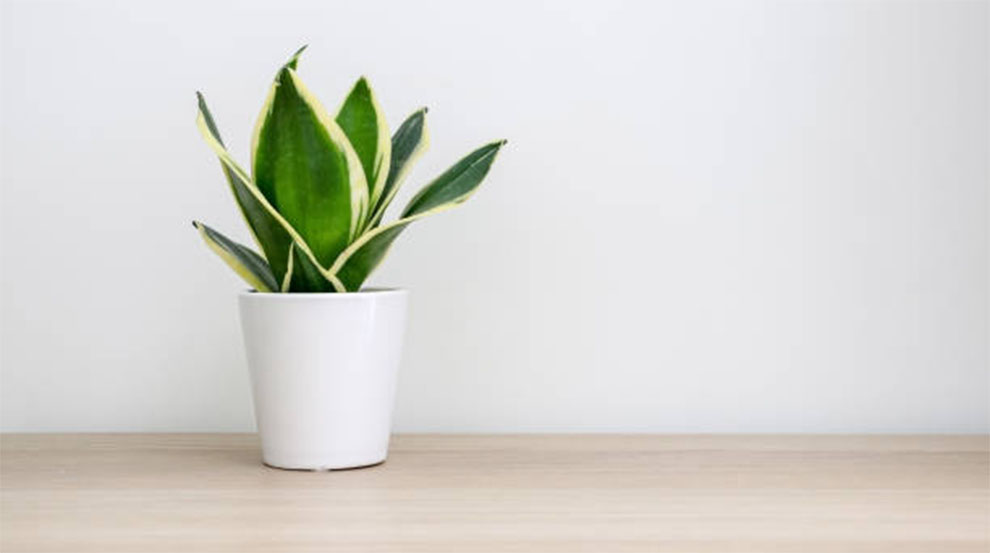
Please remember some of the problems you notice on your snake plant can be a giveaway sign of an underlying issue or your plant needing some extra feed.
For instance, discoloration, such as drooping or yellow leaves, might be an outcome of nutrient deficiency, but it might also be because of improper lighting, overwatering, or any other concern.
Moreover, it may be a little too late when you spot the signs that your plant needs a feed. Hence, we recommend tying a fixed schedule for your plant to ensure the plant never lacks nutrients.
Having said that, some giveaway signs might indicate that your plant could benefit from a good dose of snake plant food.
If the snake plant’s leaves turn light green and then yellow, it implies that your plant lacks nutrients, particularly nitrogen. It does not happen overnight. You will see your plant losing vibrancy over time.
Another indication that your plant lacks nutrients is a visible lack of vigor. Naturally, if you offer the plant the desired care and environment, it will boost over time. If that’s not happening, the plant is not getting the required feed.
Other signs that your plant needs fertilizer are:
- A weak root system
- Presence of droopy leaves
- Absence of variegation
- Curling snake plant leaves
- Browning or the yellowing leaf edges
- Presence of random spots on the leaves
Giveaway Signs Of Overfertilization
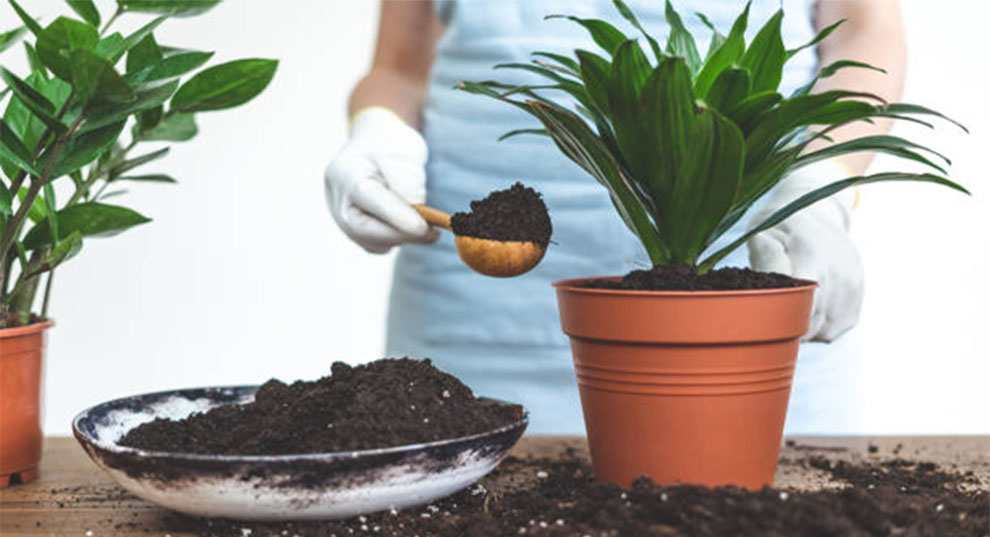
Overfeeding and overwatering are the two primary concerns that cut down the lifespan of a snake plant. If you overfeed the snake plants, they will show the following signs:
- Stunted growth
- Root rot
- Leaf burn
- Leggy and droopy plant
- Leaf blight
- Leaves edge becoming brown
- Leaves turning brown or yellow
Thus, even when using the best plant food for snake plants, less is always better.
Frequently Asked Questions
Ques 1. When is the best time to fertilize a snake plant?
Ans. Typically, snake plants enjoy fertilization during the summer and spring months, and most plants can thrive with one application in the early spring. Ideally, you must fertilize the snake plant only when it is actively growing.
Ques 2. How often to fertilize snake plants?
Ans. Ideally, you must fertilize the snake plant at least two to three times per month. Typically, snake plants do not need fertilizers to thrive or grow. But, if the plant becomes sick due to lack of nutrients in the soil, it is imperative that you use the best fertilizer for snake plants off the shelf.
Ques 3. Is there a homemade fertilizer for snake plants?
Ans. There are several homemade fertilizers for snake plants. These include coffee grounds, banana peels, green tea, eggshells, and aquarium water.
Ques 4. Should you fertilize snake plants in water?
Ans. When you propagate snake plants, you will usually place them in water. If you are thinking whether you should fertilize the snake plants while it is in water, we advise against it. It is so because the plant is already stressed with the propagation procedure. Adding fertilizer at this time will only stress out the plant some more.
Related: Disadvantages of A Snake Plant
Summing up…
A snake plant is low-maintenance and very easy to care for. However, selecting a good fertilizer can go a long way in the snake plant’s care. You must fertilize to amplify the snake plant’s growth and achieve flowers.
You can pick any of the six best fertilizers for sansevieria mentioned above. Whichever fertilizer you choose, ensure that you read the packaging label to get the usage right.
